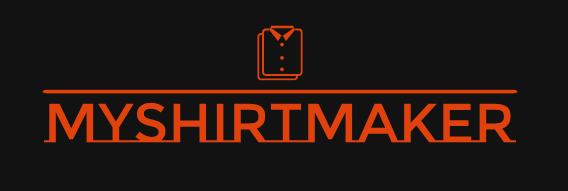Grunge Takes Over

The 1990s saw the rise of the grunge movement, a fashion revolution that rejected the polished and glamorous looks of the 80s. Grunge fashion was characterized by its laid-back, almost careless vibe, with oversized flannel shirts, ripped jeans, and combat boots becoming the uniform of the era. This style emerged from the Seattle music scene, heavily influenced by bands like Nirvana and Pearl Jam. The grunge look was all about comfort and a nonchalant attitude, with layers upon layers and a mix of textures and patterns that looked effortlessly thrown together.
Minimalism: Less is More
While grunge was all about excess, minimalism took the opposite approach, focusing on clean lines, simple silhouettes, and a muted color palette. Designers like Calvin Klein and Jil Sander championed this look, creating sleek, elegant pieces that were timeless and understated. Minimalist fashion often featured slip dresses, tailored suits, and basic tees, emphasizing quality over quantity. This trend was a stark contrast to the bold and extravagant styles of the previous decade, offering a breath of fresh air with its simplicity and elegance.
The Influence of Hip-Hop
The 90s were a golden era for hip-hop, not just in music but in fashion as well. Hip-hop fashion was bold, vibrant, and unapologetic, with oversized everything—baggy jeans, huge t-shirts, and roomy jackets. Brands like FUBU, Cross Colours, and Karl Kani were at the forefront of this movement, designing clothes that resonated with the youth. Accessories were a big part of the look, with gold chains, snapback caps, and high-top sneakers becoming essential items. Hip-hop fashion was more than just a trend; it was a statement of identity and culture.
Pop Culture Icons
Television and film played a massive role in shaping 90s fashion. Shows like “Friends” and “The Fresh Prince of Bel-Air” were not just entertainment but style guides for the masses. Rachel Green’s (Jennifer Aniston) wardrobe on “Friends” became iconic, with her haircuts and outfits setting trends worldwide. Meanwhile, Will Smith’s colorful and eclectic style on “The Fresh Prince of Bel-Air” brought a playful and unique spin to streetwear. Pop stars like Britney Spears, the Spice Girls, and TLC also influenced fashion with their distinctive looks, from schoolgirl chic to futuristic glam.
Retro Revival
The 90s were a decade of nostalgia, with many fashion trends from previous eras making a comeback. The 70s saw a revival with bell-bottom jeans, platform shoes, and tie-dye shirts becoming popular once again. The 60s made an appearance with mod-style mini skirts and go-go boots. This blending of past and present created a unique fashion landscape where old favorites were given new life. Vintage shopping became a trend as people sought out authentic pieces from previous decades to incorporate into their 90s wardrobes.
Sporty Chic
Athletic wear transitioned from the gym to everyday wear in the 90s, with brands like Nike, Adidas, and Reebok leading the charge. Tracksuits, windbreakers, and sneakers became staples, worn not just for exercise but as part of a casual, stylish look. The athletic aesthetic was all about comfort and functionality, but it also had an element of coolness. This trend paved the way for today’s athleisure movement, blurring the lines between sportswear and fashion.
Bold Patterns and Bright Colors
The 90s were not just about grunge and minimalism; bold patterns and bright colors also had their moment in the spotlight. Neon windbreakers, patterned leggings, and vibrant prints were everywhere. Designers like Versace and Moschino were known for their daring designs, often featuring clashing patterns and unexpected color combinations. This fearless approach to fashion encouraged creativity and self-expression, allowing people to experiment with different looks and step out of their comfort zones.
Denim Mania
Denim was a huge trend in the 90s, and it came in every form imaginable. Denim jackets, skirts, overalls, and, of course, jeans were essential items in any wardrobe. The decade saw the rise of various denim styles, from high-waisted mom jeans to low-rise jeans and everything in between. Brands like Levi’s and Wrangler were household names, but designer denim also gained popularity. The double denim look, once considered a fashion faux pas, was embraced wholeheartedly. Denim’s versatility and durability made it a favorite, and it continues to be a staple in casual fashion.
Gothic Revival
The goth subculture experienced a revival in the 90s, bringing dark, moody fashion into the mainstream. Black clothing, lace, leather, and dramatic accessories like chokers and platform boots defined this style. Bands like The Cure and Marilyn Manson influenced this look, which was both edgy and romantic. Goth fashion allowed for a high degree of personalization, with followers mixing vintage pieces with contemporary designs to create unique, hauntingly beautiful outfits. The 90s goth revival added depth and diversity to the fashion scene.
Teen Influence
Teenagers had a massive influence on 90s fashion, with trends often originating from youth culture. Teen-centric shows and movies, like “Clueless” and “Beverly Hills, 90210,” showcased styles that quickly became popular. Plaid skirts, crop tops, and knee-high socks were just some of the items that defined teen fashion. Major fashion brands started targeting this demographic, creating junior lines that catered to their tastes. Teen fashion in the 90s was all about experimenting and having fun, with an emphasis on finding and expressing one’s personal style in a decade rich with diverse trends.







